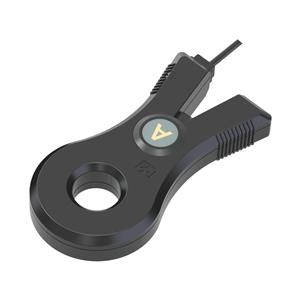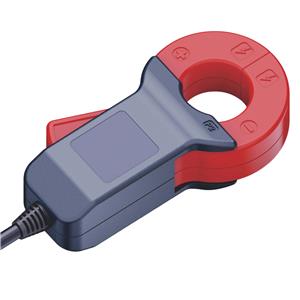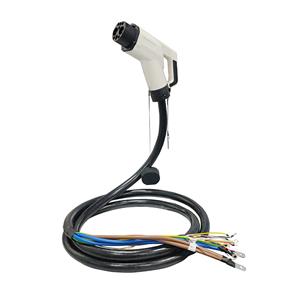How Cage Clamp Terminals Power IIoT Connectivity in Automated Systems
Industrial IoT (IIoT) transforms factories into interconnected ecosystems where sensors, PLCs, and data networks collaborate in real time. At the heart of this connectivity lies Cage Clamp terminal technology—a critical enabler for reliable data transmission, reduced downtime, and scalable smart infrastructure. Here’s how this innovation drives IIoT success:
1. Revolutionizing Sensor Wiring for Real-Time Data Acquisition
Sensors are the nervous system of IIoT, collecting metrics like temperature, pressure, and vibration. Traditional screw terminals struggle with:
Vibration-induced loosening, causing signal dropouts.
Inconsistent contact pressure, leading to data corruption.
Lengthy installation times (e.g., 5–10 minutes per connection).
Cage Clamp terminals solve these with:
Self-adjusting spring mechanisms that maintain constant contact force (e.g., 40–80 N), ensuring signal integrity even in high-vibration environments like robotics or conveyor systems.
Tool-less insertion for solid or stranded wires (AWG 28–12), cutting wiring time by 75% versus screw terminals. Operators connect sensors in seconds without ferrules or crimps .
IP67-rated designs (e.g., Phoenix Contact Axioline E) that withstand harsh environments—from chemical washdowns to extreme temperatures—ensuring sensor data flows uninterrupted.
Result: Factories achieve 99.9% sensor data reliability, enabling predictive maintenance and process optimization.
2. Enabling Seamless PLC Integration and Control
PLCs act as the "brain" of IIoT networks, processing sensor data to control machinery. Cage Clamp terminals bridge the gap between field devices and PLCs by:
Simplifying I/O Integration: Decentralized I/O modules (e.g., Siemens SIMATIC ET 200) use Cage Clamp blocks to connect sensors directly to PLCs via PROFINET or Ethernet/IP. This eliminates complex cabling and reduces control cabinet space by 40%.
Ensuring Signal Fidelity: Unlike screw terminals, Cage Clamps provide gas-tight connections that prevent oxidation and resistance drift. This is critical for analog signals (e.g., 4–20 mA) in precision applications like pharmaceutical dosing .
Supporting High-Density Wiring: Modular terminals (e.g., WAGO X-COM series) allow 48+ connections per DIN rail segment, enabling scalable PLC expansions without rewiring .
Result: Automotive plants using Cage Clamp-PLC integrations report 30% faster production line reconfigurations.
3. Building Resilient Smart Factory Infrastructure
IIoT’s value emerges when data flows securely from edge devices to the cloud. Cage Clamp terminals fortify this infrastructure through:
IO-Link Compatibility: Cage Clamp blocks integrate with IO-Link masters (e.g., ifm efector), digitizing sensor data and transmitting it over a single cable. This reduces wiring complexity while enabling remote parameterization—e.g., adjusting a sensor’s range via PLC commands.
Cybersecurity Integration: Terminals like Phoenix Contact’s mGuard combine Cage Clamp connectivity with firewall/VPN functionality. They segment OT networks from IT systems, encrypting data to prevent breaches in IIoT gateways.
Data Reliability: Proportional clamping force prevents wire damage (e.g., stranded wire fraying), ensuring <0.1% data packet loss. This is vital for time-sensitive protocols like OPC UA in assembly robots .
Result: Food processing plants using IO-Link + Cage Clamp systems reduce machine downtime by 45% through real-time viscosity monitoring.
4. Real-World Impact: Case Studies
Automotive Manufacturing: At a BMW plant, Cage Clamp terminals connect 20,000+ vibration sensors to PLCs. Data predicts motor failures 72 hours in advance, saving $2M/year in unplanned downtime .
Pharmaceuticals: Pfizer uses IP69K-rated Cage Clamp I/O blocks in fill-line machines. Hygienic design withstands sterilization, while real-time temp data ensures FDA compliance.
Energy Sector: Siemens leverages Cage Clamp-terminated RTDs in wind turbines. Reliable data transmission enables dynamic torque adjustments, boosting energy output by 12%.
5. Future Trends: Where Cage Clamp Meets Next-Gen IIoT
AI-Driven Predictive Maintenance: Cage Clamps with embedded microchips (e.g., WAGO PFC200) will analyze current signatures to predict terminal wear.
Edge Computing Integration: Terminals with integrated processing (e.g., Phoenix Contact PLCnext) will preprocess sensor data at the edge, slashing cloud latency.
Sustainable Materials: Recyclable thermoplastic housings (e.g., RS PRO EcoLine) will reduce carbon footprints by 60%.




